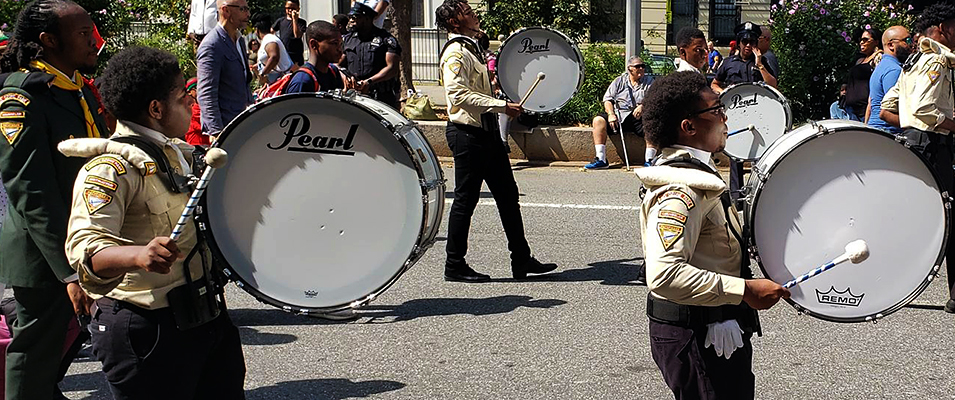
By Keith Lopez
The 49th annual African American Day Parade marched through the streets of Harlem on Adam Clayton Powell Jr. Boulevard September 16. On the humid 75-degree day, police officers began their final preparations, barricading the sidewalks for the event. Three police officers on motorcycles kicked off the parade, leading it down the boulevard from 111th Street toward 136th.
Music began to play, floats began to arrive, along with marching bands, majorettes, and religious groups. People on floats tossed t-shirts, flags, snacks and feminine hair care products into the crowd. A red, white, green and black float listed the 11 founding members of the parade and honored the late Hal Jackson, a pioneering radio personality.
Bronx Borough President Ruben Diaz Jr., Democratic nominee for attorney general Letitia James, and Mayor Bill de Blasio all waved and shook hands, while escorting marching bands down the boulevard.

During the five-and-a-half-hour parade, there was almost never a time when you didn’t hear a drum or a trumpet, or see majorettes dancing routines in the street to some of the most popular songs in the African American community. The marching bands kept the energy alive. They had help from some fraternities and sororities that stepped their way all the way to 136th Street.
New York One news anchor Cheryl Wills, the parade grand marshal, said there was reason for the community to celebrate. According to the State of Black America 2018, unemployment in the African American community is at a “record low” at 6.3 percent. The African American community’s high school graduation rate has increased to 92 percent, and 58.2 percent of African Americans are enrolling in college.

The African American Day Parade’s theme this year was “Culture is Key” and it aimed to celebrate those who have used their platforms to uplift and encourage the African American community.
The parade dates back to 1968 when the Afro-American Day and United Federation of Black Community Organizations founded it as a not-for-profit organization. The founders felt that there was a need to increase the positive image and representation of the African American community.

The African American Day Parade provides the community a platform to celebrate its heritage, accomplishments and talents. Because the African American community is so prominent in Harlem, New York, it was selected as the location for the parade, while also being proclaimed the Black capital of America.



